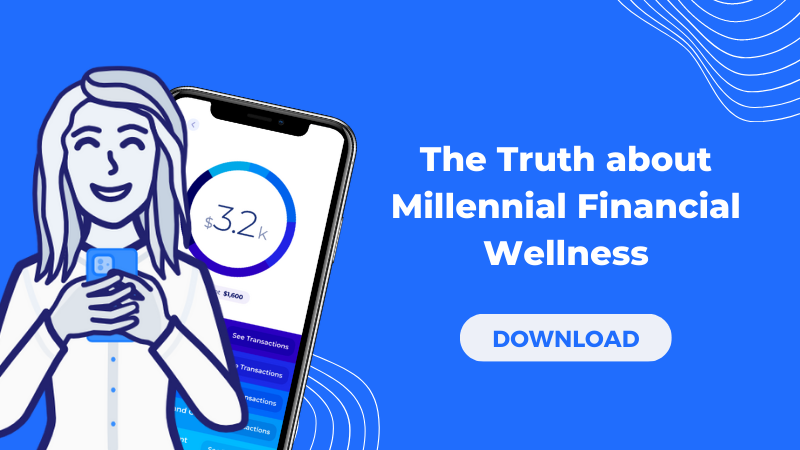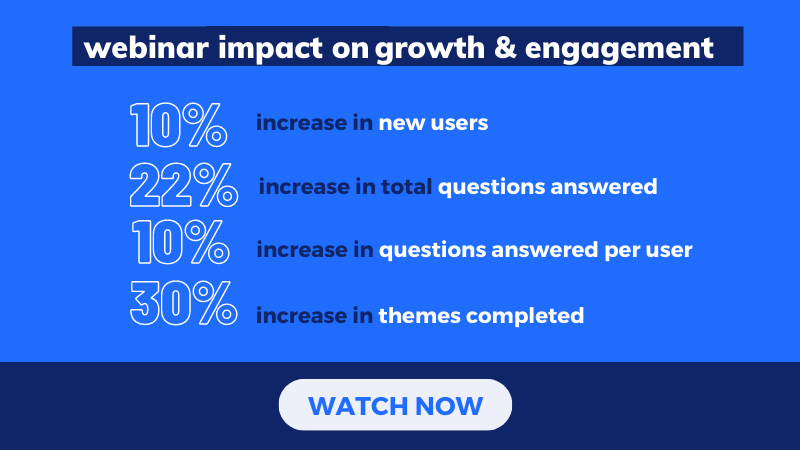The Case for Employee Financial Wellness
- Pocketnest
- May 4, 2022
- 6 min read
Updated: Jun 2, 2022
Learn how employee financial wellness drives employee recruitment, retention and productivity to grow your revenue and your business
Table of Contents:
Healthy foods available in break rooms, ergonomic workstations, appropriate lighting. These are the employee wellness concepts of yester-year. Five years later, “wellness” means something much more expansive.
The term “employee benefits” is slowly being replaced by “employee wellness,” in an effort to communicate to employees that their employers care about their well-being. Labeling packages that feature everything from retirement savings plans and subsidized life insurance to health insurance and gym memberships as “employee wellness” better represents the bigger picture: caring for the employee’s whole person.
We like to consider the five spheres of a person to help gauge their overall wellness: health, home, finances, work, and friends/family.
Employee wellness programs almost always include some sort of financial component, typically a retirement savings plan like a 401K or a 403B. But why not more? If finances make up one fifth of the employee’s whole self, supporting the employee must include more financial guidance.
That’s exactly why we developed our employee financial wellness platform—made just for employers like you. We license our software to employee wellness programs to help employers boost recruitment, productivity and retention. Built on behavioral science and psychology, Pocketnest coaches users through 10 themes of financial wellness. Its gamified, almost-addictive approach draws your employees into the app to keep their financial plan up to date—in three minutes a week. Simply put, Pocketnest addresses true comprehensive financial planning—all the topics that keep us up at night beyond just budgets and investments.
What is employee financial wellness?
Did you know that, in the wake of COVID-19, employees are five times more worried about their finances than they are about their mental, physical or social health1?
That’s right: employee financial wellness matters. And employers ought to start taking note.
Especially when considering new challenges from COVID-19—on top of $1.71 trillion in student debt spread across 44.7 million borrowers and $971 billion in credit card debt—employees are looking to their employers for help2.
Employee wellness experts and benefit provider leaders are focusing on the future of employee benefits and wellness. Exploring everything from boosting employee recruitment and retention to growing revenue, leaders from PriceWaterhouseCoopers, the Foundation for Financial Wellness, the National Wellness Institute, and more uncover how fintech is turning employee wellness standards on its head and bringing much-needed change.
Why employee financial wellness
Traditionally, 401ks leaned on a “set it and forget it” model. Meaning, you include some forms and messaging about your retirement plans in your onboarding packet and only follow up once a year, during open enrollment, to see if your employee wants or needs to update their savings plan. Why include more outreach if your employee can’t make changes until open enrollment, anyway?
Boost 401K Participation
Well, for one, you could boost your 401K participation and get more return on your investment in your benefit provider partnerships. Did you know that one third of eligible workers don’t participate in their employer’s retirement investment plan3? Your employees will experience much more value from your employee benefit providers the more they’re actively engaged in their financial planning. Employee financial wellness benefits will guide your employees through every important life event—such as a change in income, marriage, children—to ensure they’re covered now, and in the future.
Student Loan Payoff Support
Among other factors, the 2008 financial crisis contributed to more millennials enrolling in college, including those of lower economic statuses who needed to take out more loans4 . As a result, as of the fourth quarter of 2020, 14.8 million millennials owe $500.5 billion in student loans5 . Adjusted for inflation, more millennials are borrowing more money than previous generations6, making them a particularly hard hit group. We'll coach your employees through student loan restructure, refi options, savings opportunities and, ultimately, we'll take the guesswork out of their student loan payback plans.
Debt Elimination Planning
Another key reason to offer employee financial wellness? Helping your employees navigate the world of debt! With economic pressure for immediate assistance, Millennials and Gen Xers are turning to the wrong places for immediate cash—retirement funds.
Pulling from retirement funds to stave off debt collectors is no bueno! We understand debt happens—and some of it is good! Whatever kind of debt they're rocking, Pocketnest walks your employees through a complete debt payoff plan, from start to finish. They’ll get a quick snapshot of their debt (how much, and where), a breakdown of the types of debt (good vs. bad) they have, and a realistic action plan and timeline to eliminate it—for good!
The key deliverable? A personalized debt elimination plan, based on their financial situation and personal preferences. We're simplifying their debt relief plan, with clear and customized guidance that's based on their situation. We're helping them to uncover what to pay off, how much, and in what order. And, not to mention, we're giving them alternative options to dipping into their precious retirement savings!
Help millennials craft a better future (for themselves and your business!)
It’s true that most, if not all of your employees need your help. And millennials are perhaps the most in need of help. According to a recent study by PriceWaterhouseCoopers, a mere 8 percent of the country’s millennials can demonstrate high financial literacy7. Millennials are a generation of which 81 percent have long-term debt—54 percent of whom claim their student loan is the main concern—and only one quarter can demonstrate basic financial knowledge7. Instead, 67 percent of this do-it-yourself generation is getting the majority of their financial advice from two sources: Facebook and Twitter8. Gasp!
Unsurprisingly, more than 20 percent of millennials with retirement accounts took loans or hardship withdrawals from their retirement accounts in recent years7. Further, only 27 percent of millennials seek professional financial advice on saving and investment7.
Saddled with debt and lacking basic financial knowledge, Genx and millenials are approaching their prime earning and savings years without sufficient preparation.
Now, here's the good part: that's where you come in.
Benefits of employee financial wellness
Beyond simply helping employees become well, it behooves employers to provide comprehensive employee wellness offerings, including financial wellness. Simply put: financially well employees can help their employer thrive. And employers are noticing. A large majority of employers—83 percent—find that offering employees financial wellness tools develop more productive, loyal, satisfied and engaged employees9.
When employees have access to a comprehensive and holistic wellness program, they’re able to make lifestyle changes and choices that result in higher productivity and job satisfaction10. In alignment with that trend, 57 percent of employees believe their wellbeing greatly impacts their productivity11.
Employee financial stress is a real cost. Each year, a 1,000-employee company spends $240,032 in productivity—and even more for financially unwell employees who must work past retirement age12,13. Increasing retirement age by one year can increase workforce costs by 1-1.5 percent annually12,13.
Just as financially unwell employees can cost an employer, financially well employees can help their employer thrive. And employers are noticing. A large majority of employers—83 percent—find that offering employees financial wellness tools develop more productive, loyal, satisfied and engaged employees9.
As if boosting recruitment, retention and productivity weren’t enough, fintech like Pocketnest will help your business thrive.
Learn the five ways fintech will revolutionize your employee wellness program—and how you can boost employee recruitment, retention and productivity at the same time.
Employee financial wellness program examples
With two out of three employees stating they are more stressed now than they were before the pandemic started now, more than ever, employers should consider offering more wellness benefits. And, while in years past employee “wellness” and benefit offerings didn’t include financial planning, perhaps now it should.
Businesses including The Henry Ford, EDSI, SkySpecs, VFA, Autobooks, Academy of the Sacred Heart, Centerstone and many others are turning to fintech to bring employees financial wellness. Businesses using the Pocketnest employee financial wellness platform range from tech companies and ad agencies to recruitment firms and real estate agencies—employee wellness makes good business sense, regardless of the sector!
Kevin Schnieders, chief servant leader and CEO at Certified B-Corp, EDSI, brought Pocketnest to his staff because he truly believes in serving the whole person, recognizing their needs that span far outside of the four walls of the office from 9 a.m. to 5 p.m.
And employees are certainly noticing a difference in their well-being.
What does employee wellness look like
Wondering how you'll get employees engaged? That's our jam. From digital assets and emails to onsite activations and quarterly webinars, we're here every step of the way to ensure your employees are getting value from Pocketnest. Watch our latest employee webinar and see for yourself!
Built on behavioral science and psychology, Pocketnest coaches users through 10 themes of financial wellness. Its gamified, almost-addictive approach draws users into the app to keep their financial plan up to date—in three minutes a week. Simply put, Pocketnest addresses true comprehensive financial planning—all the topics that keep us up at night beyond just investments.
What are you waiting for!? Bring your team Pocketnest employee financial wellness! Our CEO and founder, Jessica Willis, can't wait to chat!
SOURCES
7 PriceWaterhouseCoopers Survey, Millennials & Financial Literacy, The Struggle with Personal Finance, 2014
8 New York Post, Americans are Clueless When it Comes to Personal Finance, 2018
9 Employers Feel More Responsible For Employees' Financial Wellness 10 8 Benefits Trends To Watch In 2017













